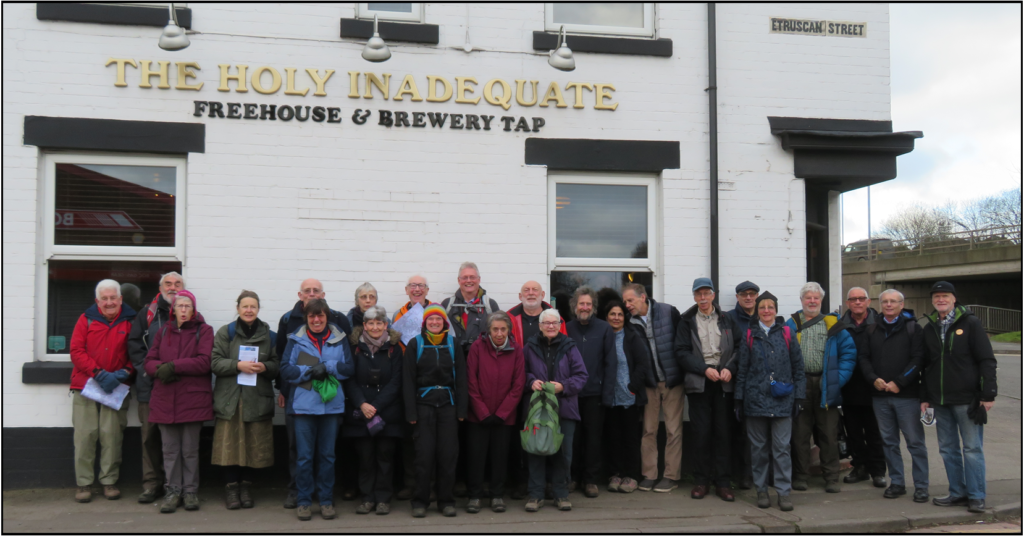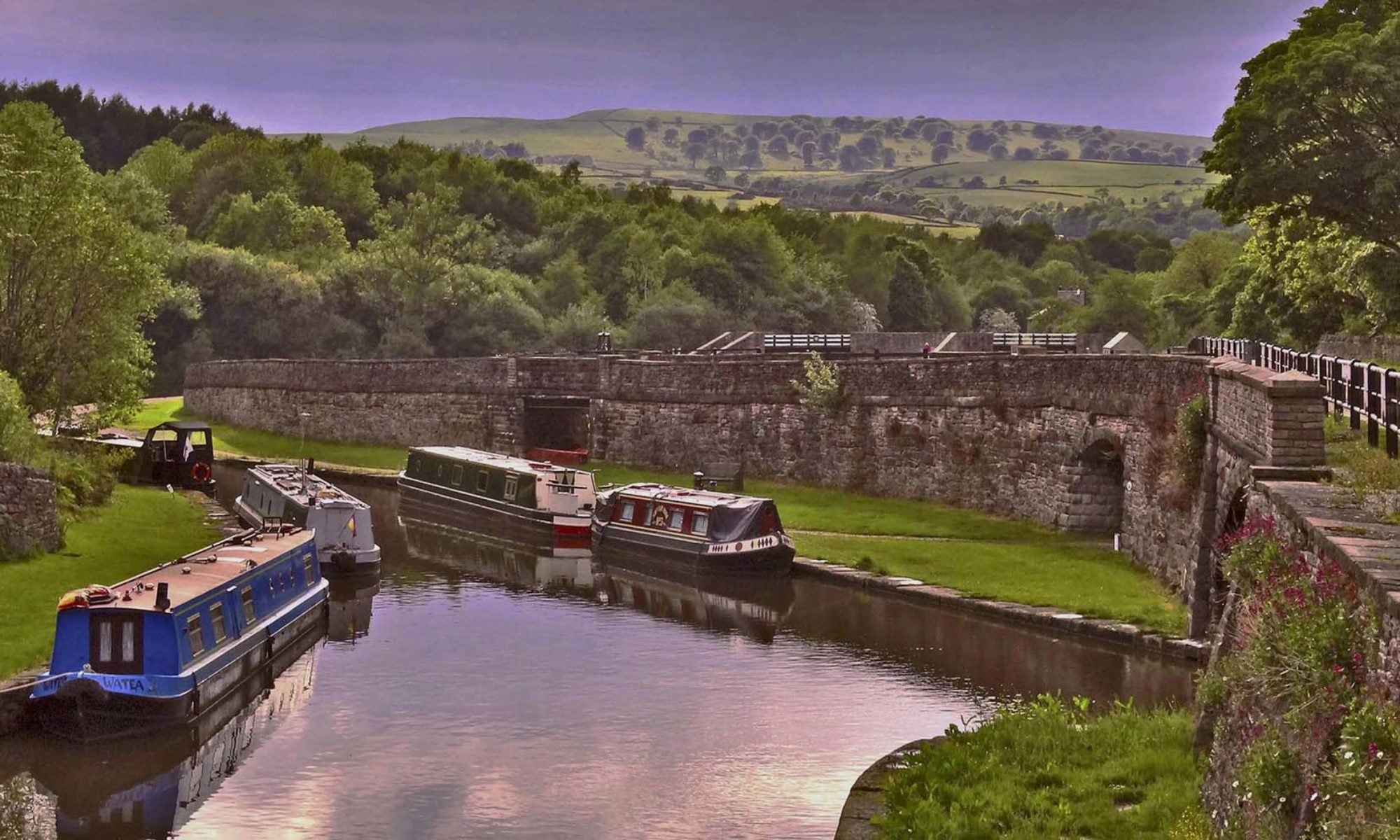The group met in the Etruria Industrial Museum car park which is built on the site of Etruria basin and wharf. The line of a horse drawn tramway that linked the wharf with Shelton Colliery and Iron Works can still be seen between buildings on the opposite side of the road to the car park entrance. This was out of use by 1900.
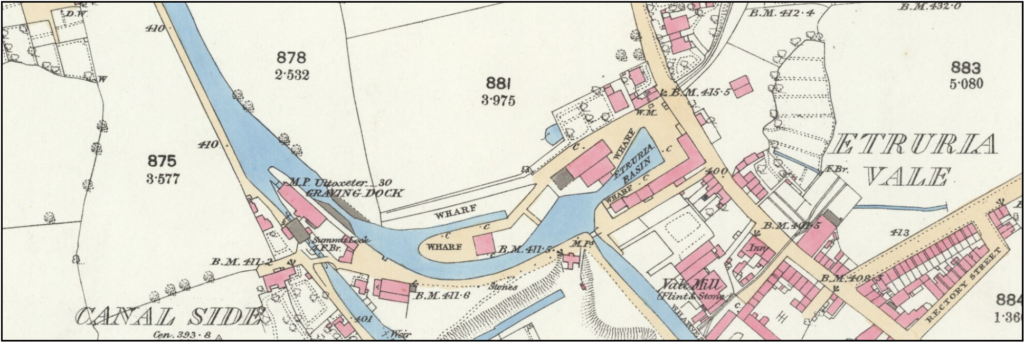
Crossing the canal on a modern high bridge ,which replaced the original lift bridge, to the towing path we were delighted to see the oatcake takeaway boat and had some delicious sustenance before heading to Bedford Street locks where CRT were holding an open day. This staircase flight of locks is currently drained while repairs are being undertaken and a new top gate installed.

We descended first into the top lock then further down into the bottom lock, surprised at the depth of the locks and the depth below the water line. Like much of this area these locks had suffered from subsidence and had to be built up a couple of times. This had resulted in the top lock being deeper than the bottom lock so a spillway was built at the offside of the bottom lock to take run off of excess water. The intermediate gates are probably the tallest narrow lock gates in the country.
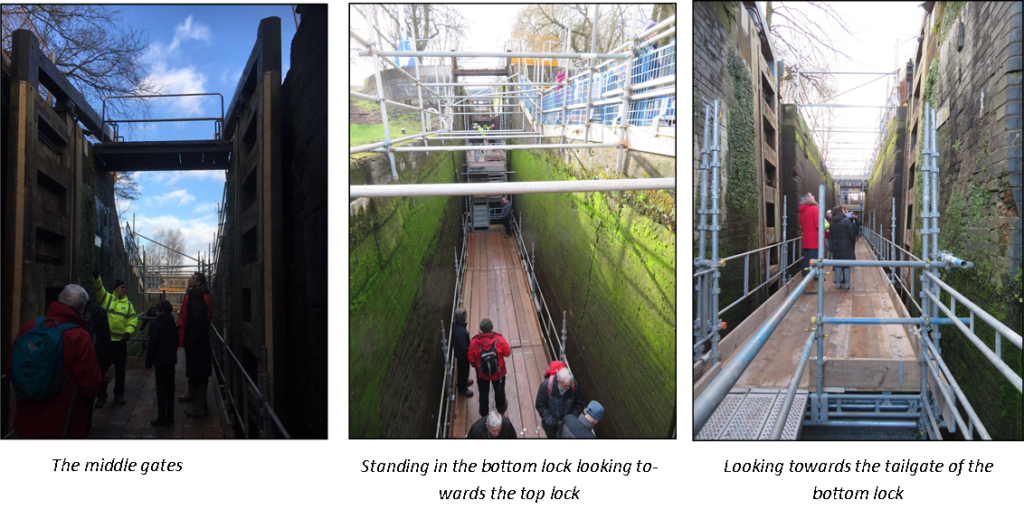
From here we walked up the Caldon Canal to lock 3, Planet lock, to see the Wharfinger’s House which still stands at the side of the bridge below the lock. The lock has only about a 3’ 2” fall, it was a later addition to the canal, built in the early 20th century, to counter mining subsidence and apparently named after the first boat to go through it.
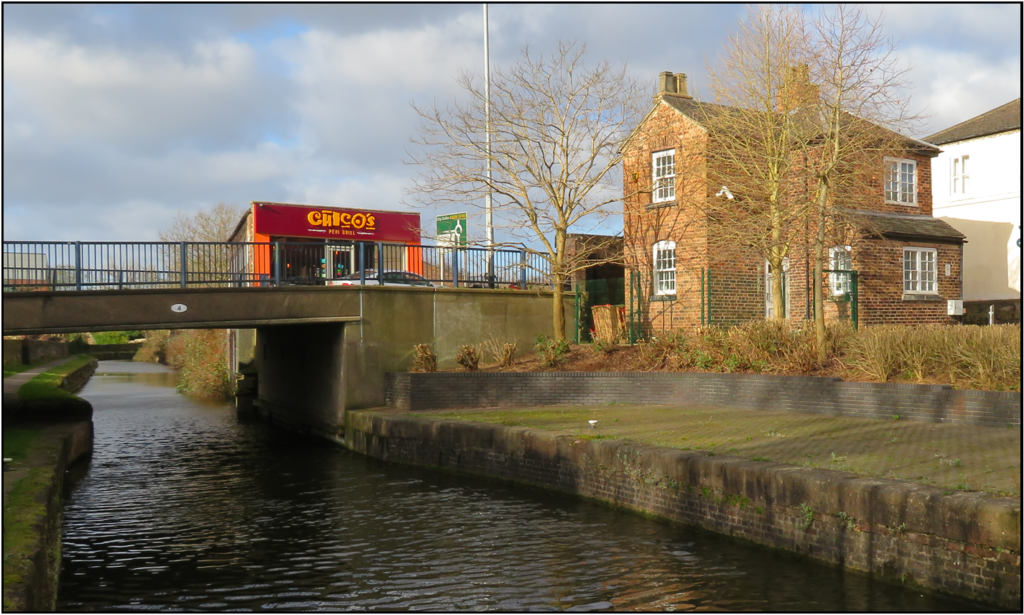
Continuing up the canal it is just a short walk to Hanley Park. The canal runs through the park and for many years had been overgrown, with railings separating the canal from the park. Grade II* listed, the park is now being restored to it’d former glory, the railings have gone and the park is open to the canal. Trees have been thinned out opening up views to Stoke Minster that were part of the designer, Thomas H Mawson’s, original plans from 1897.
We left the Caldon Canal here, crossing the ornate bridge to walk through the park, past the bandstand to the pavilion, which is also being restored.

Leaving the park we headed through the streets to the Trent and Mersey canal at the festival park site with Paul stopping at points of interest along the way. There is much to see in a small area; Victorian buildings, St Marks church, some interesting skyline artwork and Etruria Park where there are tributes to Josiah Wedgewood and Thomas Wedgewood. From St Marks churchyard there is a good view of the refreshingly low skyline of Stoke, Paul informed us that the amount of subsidence in the area means that the tall buildings that we are used to seeing in cities couldn’t be built here and we could spot one of the 47 remaining bottle kilns poking up above the roofs.
We regained the canal at The Roundhouse, the one remaining building of Josiah Wedgewood’s original Etruria Potteries, built in 1769. Here again the results of subsidence can be seen as the base of the roundhouse which originally was level with the towpath now sits a couple of metres below the canal.
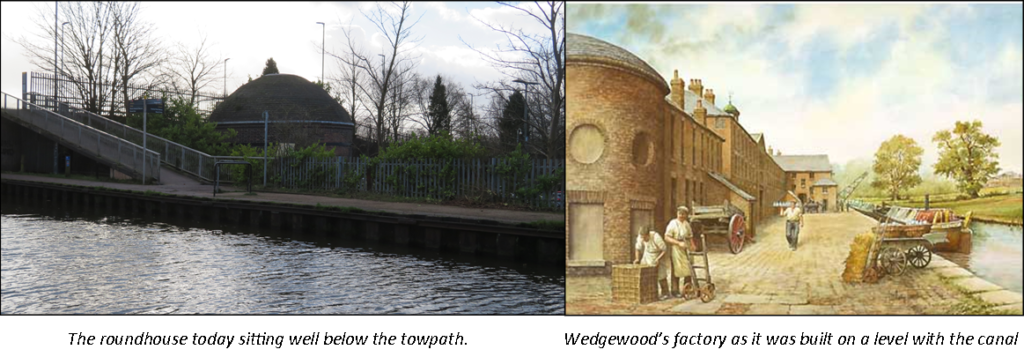
Looking along the canal with the Wedgewood factory site on our left the canal bends round to the right where the railway crosses and it skirted Shelton Bar Iron & Steel works (now long gone). The canal originally was straight, it was altered to accommodate the incline of the Potteries loop line. There was also an arm running around the back of the Wedgewood factory.
We walked down the towing path to Stoke Marina where Paul explained about the 1986 Garden Festival Site. The National Garden Festival never attracted the number of visitors that had been predicted but it’s legacy is now a thriving retail area.
From here we walked to Wedgewood’s House, which would have looked down to his factory. The house exterior is substantially as built, with a central block flanked on each side by a slightly later wing, the interior is all lost.
We then headed for our lunch stop at the wonderfully named Holy Inadequate pub where we all enjoyed an excellent, and very welcome pint.
Walking back to the Trent and Mersey and the Etruria Industrial Museum, the group stopped to view Stoke top lock, which has been build up several times over the years and is now one of the deepest locks on the system. This lock did have a roof over it, which some of the group remembered from boating in the 1970’s.

The day concluded with a guided tour of the Industrial Museum given by Bernard, a longstanding volunteer. The museum is based around the Jesse Shirley Bone and Flint Mill, built in 1857. This is the last surviving operational steam driven potters mill in the world. Bones and flint were calcined and ground into material which was added to clay, to give strength to earthenware and translucency to bone china respectively. The steam engine “Princess” was built about 1820, bought secondhand, and still gives good service. She is steamed about five times a year.
http://www.etruriamuseum.org.uk/
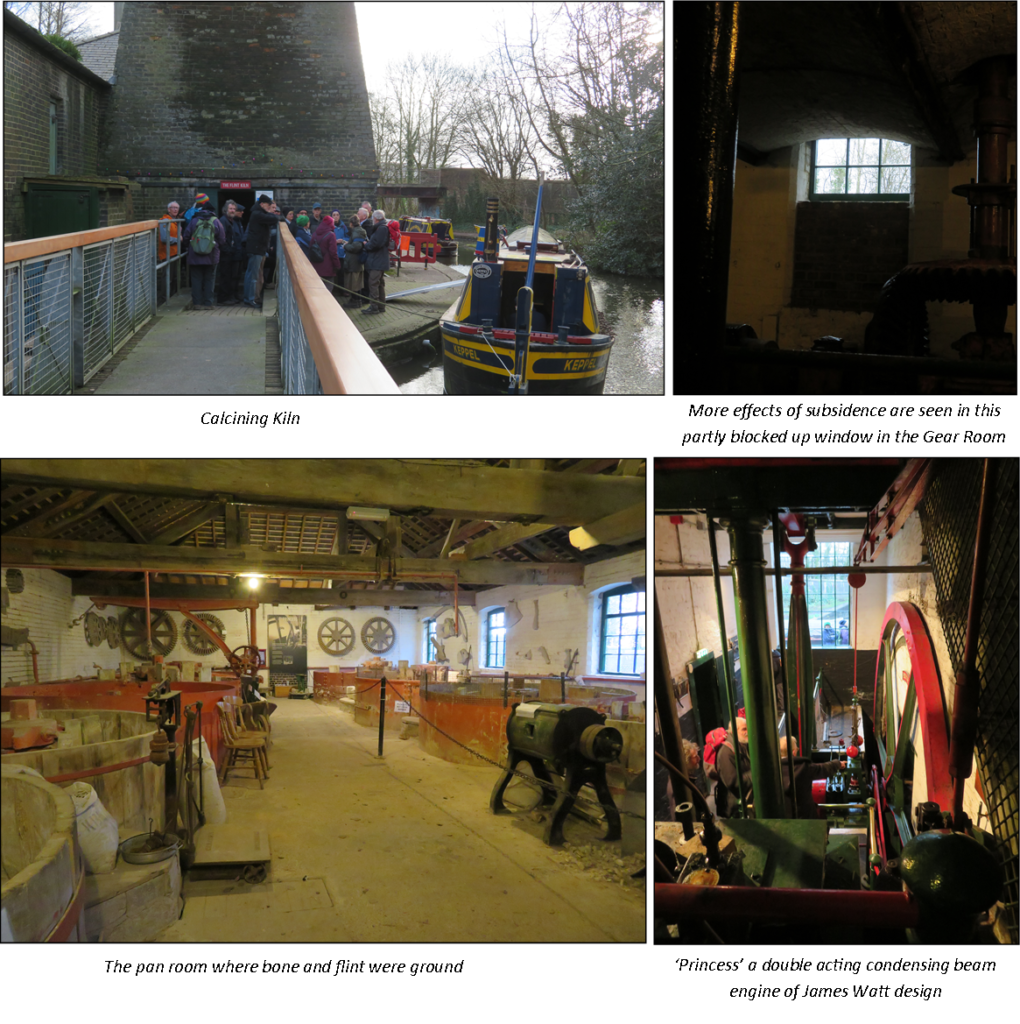
Many thanks to Paul for yet another walk full of interest.
